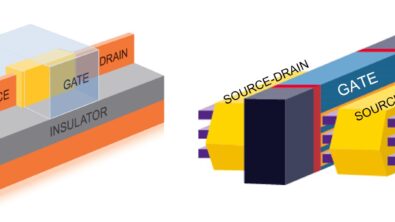Does your parasitic extraction work in 5G IC designs?

By Salma Ahmed and Karen Chow
The next-generation 5G mobile communication network is a heterogeneous network providing significant performance advantages in wireless communications. More data! Faster transmission! More reliability! Yay!
But wait…someone has to design and manufacture the ICs that actually perform all that communication and data transmission over the 5G networks. And someone has to understand and integrate technology changes, like the shift from finFETs to FD-SOI. That someone would be…you. Engineers. Design companies. Foundries. 5G mobile and network devices must be able to simultaneously manage higher digital data rates and higher frequencies, pushing analog/radio frequency (RF) IC design to its limits. But understanding the performance, power, and technology requirements for 5G IC design is only the first step.
Physical verification is important in all IC designs, but it is crucial to successful 5G IC design. Take, for instance, parasitic extraction. Extracting, analyzing, and eliminating parasitics in IC circuits is hardly new. What’s changing in 5G ICs is the level of impact these parasitics have on those high-performance, high-reliability, low-power design requirements. 5G ICs typically contain lots of analog and RF components, and operate at much higher frequencies that traditional circuits. To provide this improved functionality, 5G ICs require extremely precise design constraints for characteristics like symmetry, capacitance density, and frequency that translate into strict parasitic extraction requirements, making parasitic extraction difficult and time-consuming. Multiple extraction issues typically require multiple extraction processes and tools, which may or may not work well together.
That’s where advanced extraction toolsuites like the Calibre xACT platform come in, providing fast, highly accurate, multi-purpose parasitic extraction technology that is integrated within a single environment for ease of use. With virtually unlimited design scope, fast, scalable performance, and functionality that supports precise analog/RF design characterization, the Calibre xACT platform enables accurate extraction and post-layout simulation across a wide range of designs and advanced process nodes.
Want to learn more about 5G IC design requirements, and how you can start improving extraction speed and accuracy in your 5G designs? Why don’t you start with our technical paper, Parasitic extraction challenges and solutions for 5G IC design?


